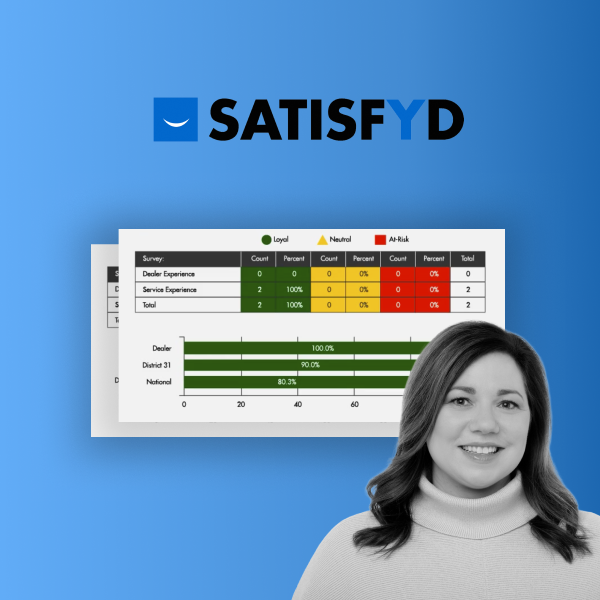Whether you’re interested in establishing your dealership’s very first business intelligence (BI) practice or looking to update your existing operations, shopping for a new BI analytics tool can be challenging.
Before you dive into setup and implementation, here are a few steps you should take ahead of time to ensure the right fit.
Evaluate Your Current State
Before you can identify and adopt a new BI analytics tool, you need a clear picture of your dealership’s specific KPIs, current BI operations, and long-term goals. Start by connecting with stakeholders, technical teams, and any existing BI or data analysts to learn how your dealership views BI and analytics today, along with any plans for the future.

For example, if your company is brand new to the world of BI, you may choose to prioritize usability and a quick turnaround on your first implementation. Alternatively, dealerships that already have existing tools or processes in place may be looking for an upgrade in the form of new customization and integration features.
Regardless of your current performance, it’s essential to consider your long-term goals and ideal state as you set out to adopt a new BI analytics tool. Consider questions like:
- Has your team noticed any critical gaps in your current reporting structures?
- Are there any new KPIs your stakeholders and executives want to start tracking?
- Will you need to create new reports as you add more dealership locations or expand to new markets?
The answers you receive, paired with additional insights you uncover across your teams, can help you define what BI features you need the most to guide your search for a new system or set of tools.
Don’t Limit Your Dealership to a Single Solution
Several BI analytics tools only focus on a single type of report — like finance, sales, or service — leaving significant gaps in dealership data. As a result, many dealers aren’t sure how to bridge the gap between niche tools or disconnected data sources, which can lead to frustrating workarounds, disparate processes, and even critical blind spots across operations.

Rather than settling for a single reporting function or leaving employees to manage several tools separately, look for a BI analytics tool that supports integration and pulls data from multiple sources.
Create a customized toolset that will help your teams increase the speed and accuracy of reporting and make data accessible across your dealership. In short, you should aim to implement a centralized platform that easily integrates with the rest of your systems and tools, allowing for aggregation and reporting that encompasses all of your business data.
Keep Customization & Scalability in Mind
Your dealership operations are continually evolving, which means your BI analytics tools should do the same. As you shop for potential solutions, consider not only how well they can support your dealership today but how equipped they are to grow with your business as it scales.
.png?width=720&name=BP3%20-%20Keep%20Customization%20%26%20Scalability%20in%20Mind%20(1).png)
Effective BI analytics tools lend themselves to customization and have the capabilities required to scale BI operations up or down as needed, adding new integrations or adjusting reports to fit the latest iteration of your business.
In short, your BI analytics tool should be built for growth. An essential part of scaling your BI operations is ensuring you can easily onboard new teammates and bring them up to speed on ongoing operations. That means your BI analytics tool should be robust yet user-friendly enough for everyone, not just your high-level technical staff.
Don’t forget to evaluate each tool’s available training resources and overall usability as you shop. The onboarding and training experience of the tool you choose will heavily inform your dealership’s ability to scale and bring in new stakeholders to support your dealership’s data-driven initiatives.
Find the Right Technology Partner
Software features and functionality form the foundation of successful BI and analytics operations, but they aren’t the only factors you should consider when shopping for BI analytics tools.

The most impressive BI tool won’t add value to your dealership if it’s virtually impossible to implement or use. As you shop, consider not only the solutions themselves but the technology partners behind them.
Dealers who want to establish or refine their BI operations need a partner committed to supporting their business now and in the future. The right-fit partner supports:
- Strategic planning
- Customizations and expansions
- Best practice adoption
- Multi-source integrations
- And more!
The right provider won’t simply sell you a BI analytics tool and then disappear from the picture. Instead, they’ll act as a long-term partner to ensure your new solution aligns with your organization’s BI roadmap and business goals.
Monitor Dealership Performance Over Time
As you customize and configure your BI analytics tools, be sure to establish well-defined, measurable KPIs to track your overall performance. You may need to reconnect with leadership and your operations teams to identify which metrics and trends are most important to track as well as how each factor impacts business decisions, forecasting, and productivity.

Remember, your operations will continue to evolve, which means you’ll likely add new BI analytics tools to your arsenal and redefine the role of BI in your heavy equipment dealership as your needs and priorities change.
At TARGIT, we develop specialized solutions that are specifically designed to adapt to dealers' changing needs and priorities. In fact, our dedication to evolving alongside the industry is one reason customers like Kirby-Smith have used TARGIT to power their operations for nearly a decade.
"TARGIT is still a great fit for us today because they have made a great commitment to our industry. Their dedication to evolving along with us makes them the premier solution for dealers.”
— Andrew Cason, Director of Business Intelligence, Kirby-Smith Machinery
Read more about Kirby-Smith's TARGIT journey and learn how they use our all-in-one BI solution to unlock insights in every department.




